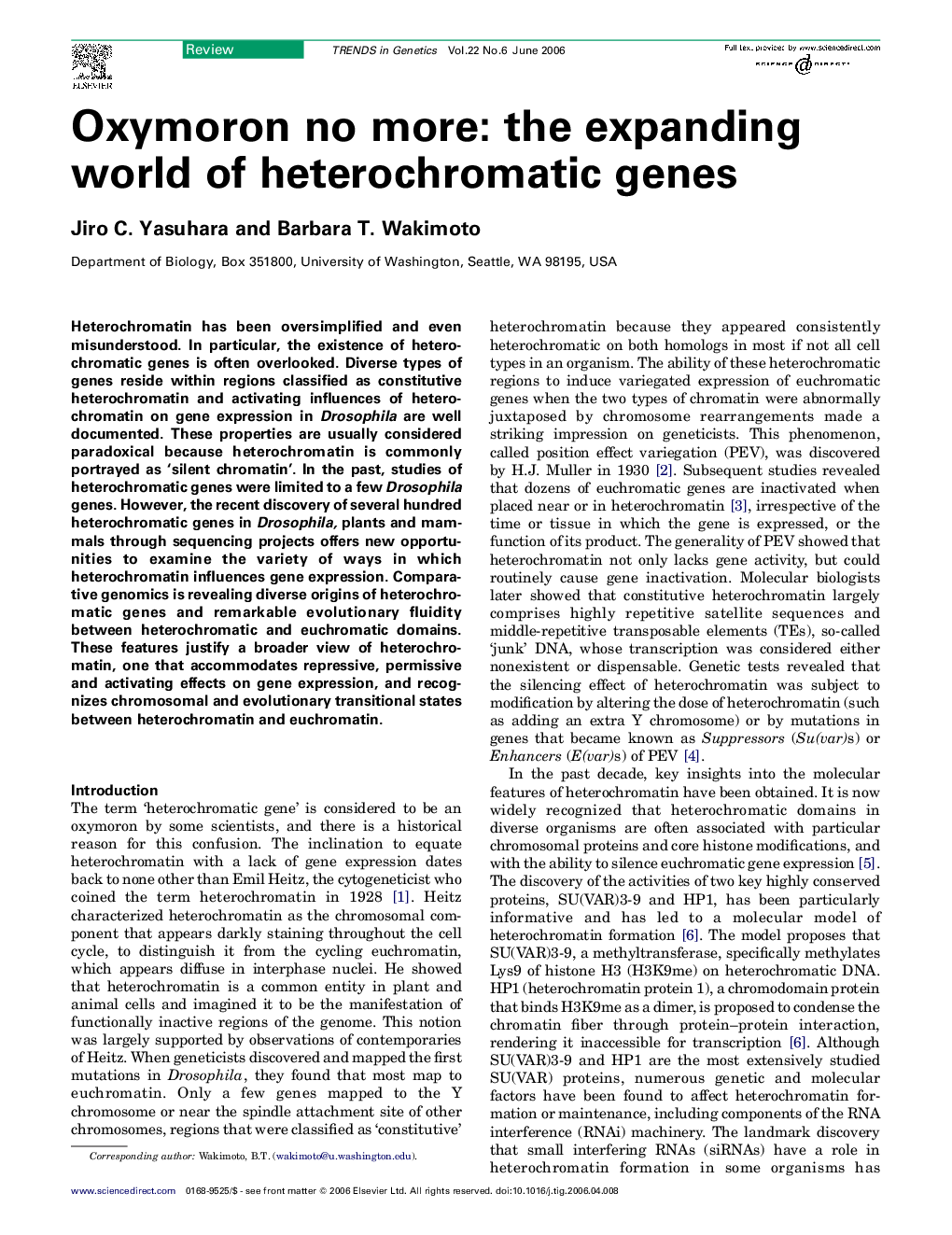| Article ID | Journal | Published Year | Pages | File Type |
|---|---|---|---|---|
| 2825565 | Trends in Genetics | 2006 | 9 Pages |
Heterochromatin has been oversimplified and even misunderstood. In particular, the existence of heterochromatic genes is often overlooked. Diverse types of genes reside within regions classified as constitutive heterochromatin and activating influences of heterochromatin on gene expression in Drosophila are well documented. These properties are usually considered paradoxical because heterochromatin is commonly portrayed as ‘silent chromatin’. In the past, studies of heterochromatic genes were limited to a few Drosophila genes. However, the recent discovery of several hundred heterochromatic genes in Drosophila, plants and mammals through sequencing projects offers new opportunities to examine the variety of ways in which heterochromatin influences gene expression. Comparative genomics is revealing diverse origins of heterochromatic genes and remarkable evolutionary fluidity between heterochromatic and euchromatic domains. These features justify a broader view of heterochromatin, one that accommodates repressive, permissive and activating effects on gene expression, and recognizes chromosomal and evolutionary transitional states between heterochromatin and euchromatin.
